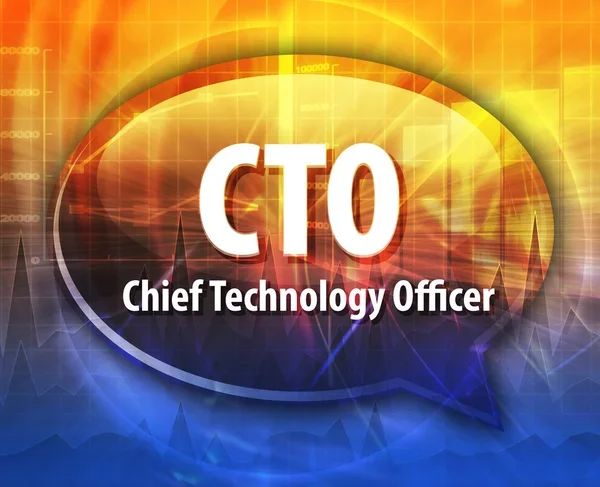Every business or startup needs a CTO to advise and oversee different technical and product aspects. However, over the years, business growth has been more comfortable with virtual CTO services. They are much more affordable than an internal CTO and provide the services with the same degree of efficiency without worrying about additional office rent and/or payroll taxes.
In this guide, we will give you a detailed view of what a virtual CTO is, its roles and responsibilities, and how can you hire a CTO.
What Is a Virtual CTO?
There are various types of Chief technology officers, A Virtual Chief Technology Officer is an off-site IT supervisor who tackles technology issues every day.
The general target of a Virtual CTO is to exhort and direct an association by giving the best innovative answers to boost productivity.
For instance, a Virtual CTO plans to adjust an association’s IT methodology to its general targets. If you hire CTO as a service then you can avail all the services of an internal CTO without having to pay a whopping amount.
What Does the Virtual CTO Do?
The specific job of a virtual CTO will be different according to the requirements of every business. Some of the things that you can expect from your virtual CTO includes:
- Breaking down plans of action, accessible assets, and IT foundation.
- Counseling on the most proficient method to utilize new innovations to further develop productivity and general business success.
- Overseeing the technology vision present inside your business.
- Counseling on tech-based business issues.
- Suggesting innovation speculations that guarantee the most elevated ROI conceivable.
- Overseeing client connections and proposing plans for new customers.
- Guaranteeing programming arrangements are planned and grown appropriately.
Generally speaking, the CTO will offer a scope of choices according to the jobs your virtual CTO will play and these are frequently tweaked to accommodate your business.
How To Know If You Need a Virtual CTO?
Since recruiting an in-house CTO can be cost-restrictive for small and medium-sized associations, a significant number of them have started looking somewhere else. Today, associations can get a similar degree of skill from a virtual Chief Technology Officer.
If you figure your business could profit from an external CTO, check whether any of these four advance notice signs apply to your business’s ongoing circumstances.
- Your business is going through issues like staying aware of the changing requirements of innovation.
- Innovation issues in the workplace are turning into an interruption.
- Your organization can’t legitimize the technology assets to recruit an in-house staff part to oversee IT.
If your response was ‘yes’ to at least one of these inquiries, an external IT leader could be useful to your business.
Virtual CTOs have the experience and skill to:
- Take part in administration choices.
- Supervise innovative work.
- Stay up with the latest technologies on innovation patterns, principles, and consistency guidelines.
- Other key advantages incorporate staying up with the latest news about how technology assets are really being utilized; shielding an association’s confidential information and streamlining business processes.
- Use innovative technology to achieve the short-term and long-term goals of the organization.
They give long-haul tech arranging, including creating vital objectives. For instance, a virtual CTO can help correspondence between upper administration and staff by crossing over information holes. Or on the other hand, in the event that interior issues happen inside your IT division, they are able to investigate the issue.
As small and medium-sized organizations begin to see the effect technology roadmap can have on all parts of their business, these admonition signs present a potential chance to consider recruiting a Virtual CTO.
Virtual CTO Services Benefits
1- It’s Cost-Effective
Internal CTOs are great since they are fully dedicated to your project and are available whenever you need them; however, they can cost you a fortune. Often, their expertise might fail to keep up with the ever-increasing evolution of technology and business strategies.
But that is not the case with Virtual CTO services. They make every penny count by delivering their service with the same efficiency as an in-house CTO since they are working through the internet. They are always up to date with the most recent changes.
2- Bespoke Remote IT Support
Virtual CTO organizations have transformed into a primary resource for associations that require off-site IT support that is comparatively as capable as having an in-house laborer.
The main reason why businesses need CTO consulting services is to have great and visionary IT support that isn’t only essential for events where tech-based issues happen but also helps associations take on new systems and advances to help them succeed.
3- Here to Help, Not to Intrude
“CTO” is crucial work. It’s typical for business visionaries to think that hiring virtual CTO services for your company may interfere with or impede their objectives. However, this isn’t true. Understanding your business and your targets is fundamental for a developer in the CTO cycle.
From here, the CTO can ensure every decision suits your needs. You will be instructed about every idea made by a CTO, none of which will happen until you get your underwriting.
Yet “virtual” CTO organizations mean they are not with you every day of the week; you have an extraordinarily experienced IT capable to liaise with you and visit you on the spot. This entry licenses them to get to know you, your gathering, and your industry better to give the most supportive proposition to your business. Virtual CTO services also offer an extent of additional IT sponsorship.
4- Innovative IT Strategy
Although a good CTO will always comply with your business objectives, it never means that they won’t give you any different innovative ideas from their side. By working with different clients and businesses, Virtual CTOs can draw up the best IT strategies that could benefit the growth and development of your business.

Strategic Planning Activities of a Virtual CTO
Virtual CTO’s Strategic Planning Activities Include:
- Recognizes open opportunities and dangers for conveying the business’ services
- Schedules the leads so that they recognize and focus on drives while setting plans for the assessment, advancement, and sending of all innovation-based administrations
- Plans budget that has to be implemented ahead
- Examines the current technical expertise stack including the stock of innovation resources
- Examines relevant arising advancements to fuel the development
- Plans programming licenses to enhance business while staying legitimate
- Plans cyber security technology strategies to shield a dedicated resource and information from misfortune or debasement
- Plans calamity recuperation to prevent loss of frameworks or information
- Fosters reinforcement techniques to safeguard important information
- Lays out administration process that meets government, accomplice, and company assumptions for client/client-data protection
- Assists in documentation for meeting compliance and industry guidelines
Virtual CTO’s Implementation Duties Include:
Virtual CTO’s Implementation Duties Include:
- Assess and recognize fitting innovation stages (cloud administrations, online applications) to convey and uphold the organization’s items
- Guide business-innovation choices utilizing expensive prescribed procedures
- Oversee Managed IT Services execution to guarantee the most elevated level of administration
- Plan long haul equipment and software safety and cloud arrangement and prepare to bid details for these things
- Plan and oversee tasks to keep business moving forward as planned
- Create and execute an association-wide data and cyber security intended to safeguard the classification, honesty, and accessibility of information
- Create and execute an association-wide fiasco recuperation and business interference.
- Help specialized staff determination through conferences.
Outsource Vs In In-House CTO.
IT is a central piece of your business and, when used the right way, can assist with making economical business development. Be that as it may, throughout the long term, as IT has become more fundamental it has additionally become more complicated.
In 2020, the requirement for IT is more prominent than any time in recent memory, so how might you get mind-boggling IT that upholds your necessities and your spending plan?
Luckily, you have choices.
Choice 1: In-House IT. You might have a completely decent in-house IT division whom you depend on for a wide range of issues, and they take care of business.
Choice 2: Outsourced IT. You could give up the intricacy to an external group and let them handle everything.
In-house IT and Outsourced IT both have their advantages and downsides. So it is up to you to decide which one would work the best for your business.
In-House CTO Pros
1- They Know Your Business goals
They are coordinated with your business goals. Consistently they work with your group to comprehend the worth that every person and every division accommodates your business. They understand what your business needs to make it run as expected and support your top line.
2- They Know Your People
Your IT group grasps your employees, your clients, your customers, and your possibilities. They figure out your business objectives and measure progress effectively.
3- They Know Your Set-Up
For the more strategic side of things, having an assistance work area in-house has its competitive advantage. An In-house CTO has developed top to bottom information about your frameworks and setup, and hence can get through that “get-to-know-you” onboarding stage and can fix issues rapidly.
4- You Know Where They Are
Your IT office is nearby and offers support for only your organization. They are accessible at whatever point you want them. A client in the workplace can send a message or get up, and stroll over to your IT office.
In-House CTO Cons
1- They Can’t Finish Everything
Small inside IT groups frequently get stalled with everyday client backing or questions. This doesn’t leave a lot of space for inventive innovation arrangements that impel the whole development process. If you’re a medium-size business, you might have just a single IT group or technical expertise who’s liable for all help and questions, so they’re not ready to explore the most current patterns or execute venturesome advances that reform your business. Additionally, the capacity to increase and reduce as business request changes can be more troublesome with in-house IT.
2- Increased Key Person Risk
A star IT colleague can be extremely valuable. However, imagine a scenario in which they leave and take institutional information with them. They approach all your basic data and foundation and, at times, are the main wellspring of help for the business applications, frameworks, and colleagues. You really want to ensure your business will not be in danger on the off chance that your key-individual leaves.
3- Need Support for It Issues Outside Their Specialized Topic
IT is perplexing and complex. No technology expertise as a rule has each of the abilities to meet each IT need in your business. Your in-house group might experience difficulty with movements to new programming or equipment that smoothes out business processes, further develop versatility, and drive adaptability yet are perfect at settling client issues.
Outsourced CTO Pros
1- They Know a Great Deal
Virtual CTOs work with a variety of organizations, both in your industry and in others. They know what will be ideal for your business in view of their involvement in different organizations in your industry. They additionally have broad information on arising programming, applications, and innovation that can push your development.
2- They Have Range
Since their group has an extensive variety of abilities – from project designers and engineers to help work area partners – they’re ready to research and access different programming, applications, and innovation that your in-house division probably won’t actually be conscious of.
3- They Give You Methodology, Not Simply Technology Strategies
You get a virtual CTO who outfits you with key objectives and plans in view of a supply of different experiences and information acquired by working with a wide range of accomplices.
4- No Key Person Risk
With a different group of specialists, you don’t succumb to losing that one imperative master.
5- They Support Your Primary Concern
You have a group of senior-level IT specialists working for your business without paying every one of their compensations. For an in-house group, you’re probably paying their compensation, benefits, strategic planning, gadget acquisition, and vocation improvement, and that’s just the beginning. When you hire outsourced CTO services, you just compensate for the administrations you need to convey and the innovation you want.
Thus, it’s implied that outsourcing your IT is definitely savvier than employing an in-house group.
They take more than just tech into the account.
These tech specialists realize that far-reaching IT support incorporates the cycles, individuals, and innovation.
Outsourced CTO Cons
1- You Have Fears
Outsourced CTOs will approach vital frameworks for maintaining your business thus, to function admirably together you should have a great deal of trust that they will be supporting you with honest intentions.
Another normal trepidation is that the innovation arrangements will cost you a lot and you won’t see the profit from the venture (ROI) you’re searching for.
2- You Feel Somewhat Wary
You might question the outsourced group’s capacity to give speedy support circles back and reactions when they are not on location. Normal inquiries that can turn out to be huge dissatisfactions are:
- when will I get a reaction to my administration on my desk
- How rapidly will my issues get settled, and
- When will my email be ready to go back?
It’s not unexpected to have fears about correspondence that could cost you time, cash, and stress. Clear correspondence is fundamental for any business relationship – and if it is not done right then, it’s not the right fit.
Remember that these outsourcing “cons” don’t have any significant effect on all Virtual CTO as a service provider. Consider them caution signs to look out for while looking for an outsourced CTO.
Virtual CTO Provides a Collaboration Website that Includes:
- Records connected with the different drives are shared.
- Specialized and seller contact data is posted.
- A board schedule for the technology is kept up with.
How to Hire Virtual CTO Services?
Now that it’s clear how vital it is for your business to hire virtual CTO services however the main thing is you should not go for any virtual CTO as a service provider that you see. While a good virtual CTO can uplevel your business game, a lousy or ineffective one can definitely break it.
Many different factors contribute to making a good Virtual CTO. Here is how you can hire CTO services in the most effective way.
1) Determine Your End Business Goals
Would you like to construct an MVP?
Is it safe to say that you are attempting to benefit from your tech group and work on the interior processes?
Or is it that you are searching for ways of meeting clients’ momentum and future requests?
Know where you need to concentrate the endeavors of a CTO and clearly explain what kind of results you are expecting.
2) Characterize Requirements for the Role
You really want to conclude whether a CTO should be even more a geek or a specialist. In light of the picked course, you might possibly require a candidate to have coding abilities, Quality assurance, and testing experience, designing outlook, and so on.
In a perfect business world, you need to find somebody who is in fact pertinent and communicates in the language of business.
CTOs are groundbreaking pioneers and along these lines, should move toward business software development decisively.
3) Approach Your Contacts for Advice
Don’t misjudge the power that verbal exchange has in recruiting C-suite leaders.
Converse with entrepreneurs that have a CTO in their group or have worked together with a CTO specialist. Additionally, use web-based systems administration stages like LinkedIn and visit tech occasions or meetups.
4) Ask Google
Surf the internet for the rundown of organizations worldwide that give advancement and counseling administrations. Generally speaking, they feature an arrangement of finished technology projects. Through contextual business analysis, you can find out about CTO arrangements given and conclude regardless of whether it is something you are searching for.
Make a point to check business rating stages like Clutch. There, you will in all probability track down surveys and criticism of the supplier’s genuine clients.
Bottom Line
Considering the time and exertion they put into hoarding their insight base, CTOs are to be remunerated similarly in pay rates. This could end up being costly for new companies and small organizations to bear the cost of a full-time CTO.
An association can profit from the administrations of virtual CTOs that are given by consultancies like Hapy co. Associations can remain related to the virtual CTOs for a span until their task is balanced out and becomes self-manageable.
FAQs
How to Become a Virtual CTO?
First off you need to learn skills required by the role of a virtual cto, once you have that ready in hand. Start networking yourself and putting it out there that you are providing virtual CTO services.
Why Does a Company Need CTO?
A company requires a CTO to stay updated on the recent technology roadmap emerging trends and improve their tech structure to suit the target market.




